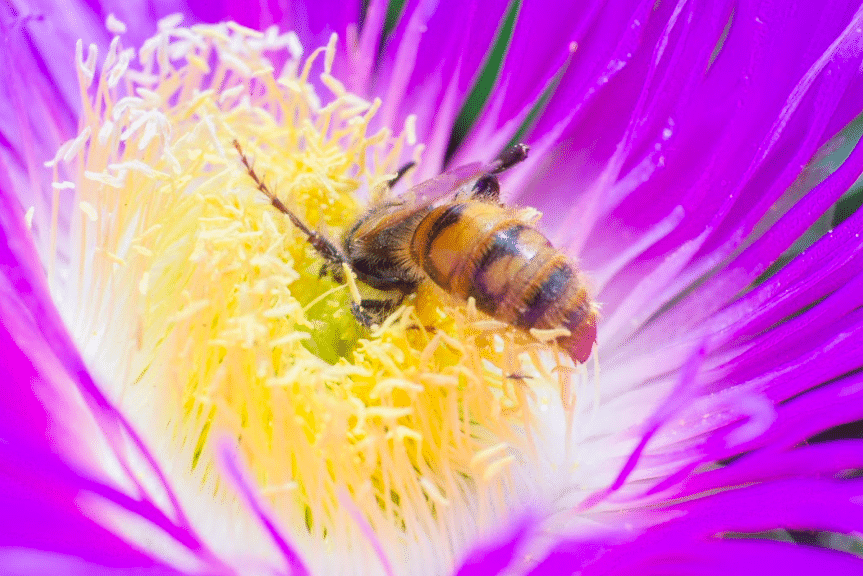Bees feed on the honey they produce, but for this to be possible they need to collect some raw materials such as nectar and honeydew. Depending on the origin of these raw materials, honey will mainly contain fructose, glucose, and sucrose and in small quantities also maltose and other types of sugar. Fructose, glucose, and sucrose are therefore the most important nutrients for bees.
The energy supply of these animals is guaranteed by the sugars contained in nectar and honeydew, subsequently transformed into honey and stored in the combs; the protein intake, however, as well as that of lipids, Vitamins, mineral salts, and amino acids comes essentially from pollen which is a food of fundamental importance.
The seasonal cover is therefore an extremely important factor for the protection of bees so that they can take on the raw materials they need. One of the greatest threats to this species in the cities is the lack of a habitat in which to find nutritious food; however, several aspects must be considered in the choice of friendly plants and flowers for these insects. One feature of particular importance is the diversity of flower species, bees need to rely on the widest available options during the three seasons in which they are active.
The flowers that provide the most support to bees are those that can offer the right amount of nectar and pollen. The more flowers are rich in these substances, the more useful they will be. Starting from spring, when the bees resume their activities, the best plants for this insect are chives, rosemary, clover, and sage. Lavender, echinacea, borage, sunflower, mallow, and marigold are recommended during the summer. Finally, autumn offers a wide variety of bee-saving flowers such as chrysanthemum, chestnut flower, thyme, acacia, and Jerusalem artichokes.
